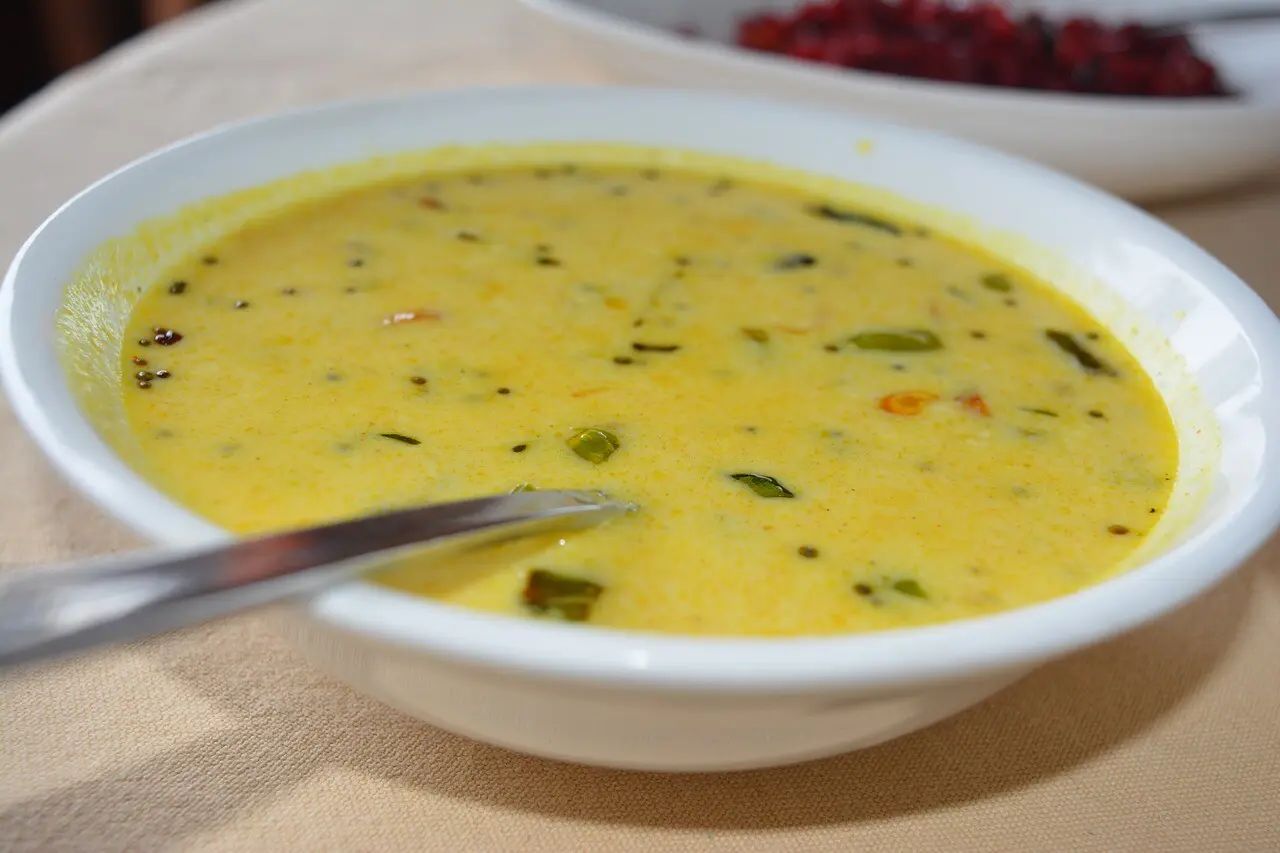So its Sunday afternoon. You are lying on the couch with your favorite tab and surfing the internet. As the clock hits 2pm, your hunger starts to develop and you need something different to change to satisfy your taste buds. Instead of getting up, you call your mum or whoever in the house is your lovable master-chef and place your order. “I am fed up of everyday Dals and Sabjis…how about a Punjabi Karhi?”
Ummm…yes! Well we Punjabis are different and our special lunch does not go far from rajma chawal, karhi chawal or cholle chaawal 🙂 Ok, so whats cooking? My lovable sis is preparing karhi chawal and the smell from the pressure cooker downstairs has already reached my lounge upstairs.
Now lets bust some of the myths. Is Karhi fattening or makes you fat? Well, no if its prepared in the right way:
- Use mustard oil.
- Avoid Pakoras.
- You can have potatoes in it but in controlled proportion.
- Have it with brown rice instead of white rice.
- Avoid salad with Karhi Chawal. Have salad 30 mins before your meal. Onions can be had (Spray apple cider vinegar and sunflower and flax seeds powder).
Lets look at some of the health benefits Karhi has to offer:

Curd in Karhi
- Helps to improve the digestive system
- It Helps to strengthen the immune system
- Helps to cope with stomach problems
- Beneficial for dealing with osteoporosis
- Consuming curd or yogurt increases the capacity to absorb the nutrients and minerals form other food stuffs
- Consumption of curd provides relief to the person suffering from dysentery
- Helps to get strong bones and teeth as its calcium content is high
- Helps to minimise the risk of high blood pressure
- Coping with high level of cholesterol becomes easier with the help of curd
Turmeric powder (haldi)
- Turmeric has been in use since antiquity for its anti-inflammatory (painkiller), carminative, anti-flatulent and anti-microbial properties.
- The herb contains health benefiting essential oils such as termerone, curlone, curumene, cineole, and p-cymene.
- This popular herb contains no cholesterol; however, it is rich in anti-oxidants and dietary fiber, which helps to control blood LDL or “bad cholesterol” levels.
- It is very rich source of many essential vitamins such as pyridoxine (vitamin B6), choline, niacin, and riboflavin, etc. 100 g herb provides 1.80 mg or 138% of daily-recommended levels of pyridoxine. Pyridoxine is employed in the treatment of homocystinuria, sideroblastic anemia and radiation sickness. Niacin helps prevent “pellagra” or dermatitis.
- Turmeric contains very good amounts of minerals like calcium, iron, potassium, manganese, copper, zinc, and magnesium. Potassium is an important component of cell and body fluids that helps controlling heart rate and blood pressure.
Besan (Gram flour) and herbs
- When compared to the standard white flour used in USA and Europe, gram flour is much more nutritious. It is low in saturated fat, cholesterol and sodium. A 100g of besan flour contains about 10g dietary fiber and 22g protein higher than your usual wheat flour.
- It contains a high proportion of carbohydrates, up to 57 g/100 gram. However, compared to the standard wheat flour, it is still lower in carbs. Besan is also rich in various nutrients including magnesium copper, folate, and manganese. It also contains iron, zinc, phosphorus, calcium and potassium.
- Herbs-methi seeds, hing, curry leaves, red pepper chilli all these herbs help in digestion and increase the immunity.
Enjoy your Sunday!
With love, Lavleen 🙂


 Ummm…yes! Well we Punjabis are different and our special lunch does not go far from rajma chawal, karhi chawal or cholle chaawal 🙂 Ok, so whats cooking? My lovable sis is preparing karhi chawal and the smell from the pressure cooker downstairs has already reached my lounge upstairs.
Ummm…yes! Well we Punjabis are different and our special lunch does not go far from rajma chawal, karhi chawal or cholle chaawal 🙂 Ok, so whats cooking? My lovable sis is preparing karhi chawal and the smell from the pressure cooker downstairs has already reached my lounge upstairs.